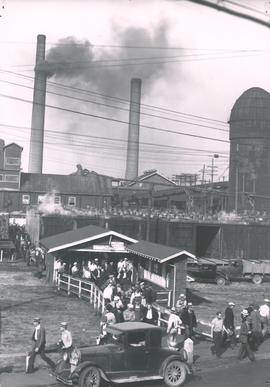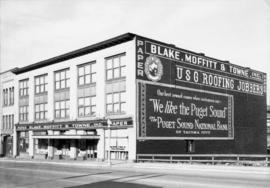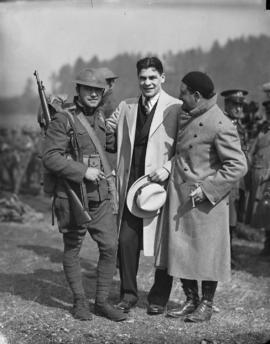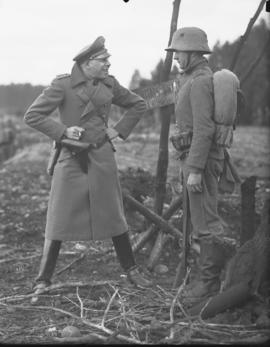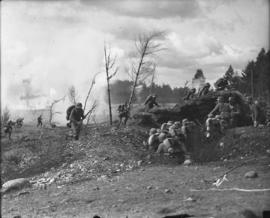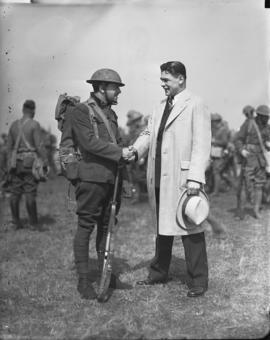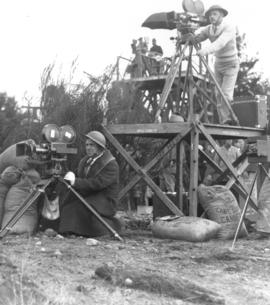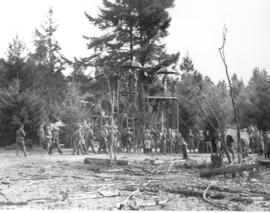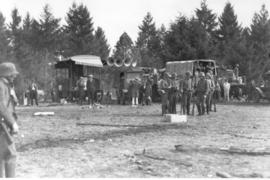- Item
- ca. 1935
Part of Chapin Bowen Photographs
ca. 1935. Workers coming through the gate at the St. Paul & Tacoma Lumber Co. mill in Tacoma, 1220 Saint Paul Ave., around 1935. The mill was established in 1888 on a tideflat island called the "Boot," which lay between the two principal outlets of the Puyallup River. The mill began operation in April of 1889. Production rose until, by 1940, the mill claimed the largest daily production in the world.
